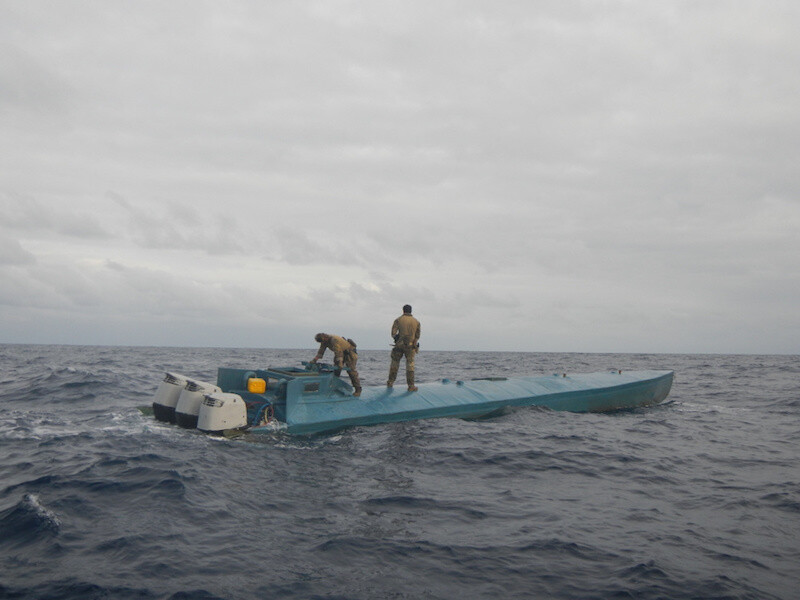The crew of the Coast Guard Cutter Active (WMEC 618) returned to their homeport in Port Angeles, Wash., recently after a 58-day counter-drug patrol in the Eastern Pacific Ocean.
The 55-year-old cutter and crew patrolled international waters off the coasts of Central America and Mexico in support of the Coast Guard and partner agencies’ maritime illicit drug interdiction missions.
The Active intercepted two vessels suspected of smuggling illicit narcotics. Active’s crew seized approximately 5,650 lbs. of cocaine worth an estimated $106.8 million from the combined interdictions.
One of the two smuggling vessels, which are designed to evade detection, was a low-profile vessel. Low-profile vessels ride low in the water and are often painted blue to camouflage with the ocean which make them more difficult to track. The contraband and suspects were transferred to the custody of federal law enforcement agencies for prosecution.
Coast Guard assets, authorities, and missions uniquely position the Coast Guard to be a vital part of the overall U.S. joint force to operate with, and provide ability and capacity development programs to Central & South American nations.
Active’s crew offloaded approximately 11,500 lbs. of seized cocaine in San Diego, May 19, representing four suspected drug smuggling vessel interdictions made by crews aboard the Active, the Coast Guard cutters Steadfast (WMEC 623) and the Tahoma (WMEC 908).
The Active also conducted two search and rescue missions during their deployment. Active’s crew rescued four fishermen from a stranded fishing vessel and towed the disabled vessel until another Coast Guard cutter completed the search and rescue case. The second case Active responded to was a distress call for a jet skier injured in the water. The cutter’s health services technician provided first aid to the person and stabilized the injured jet skier for further transfer by Coast Guard Station San Diego to waiting emergency medical services personnel.
The Active was accompanied by an MH-65 Dolphin helicopter from Coast Guard Air Station San Francisco and personnel from the Helicopter Interdiction Tactical Squadron (HITRON) from Jacksonville, Fla. The helicopter and HITRON aircrews are capable of utilizing airborne use of force including disabling fire on the engines of non-compliant vessels suspected of carrying contraband. Additionally, Active’s crew was supplemented by four Pacific Tactical Law Enforcement Team (PAC-TACLET) members from San Diego. PAC-TACLET’s specialization in law enforcement and knowledge of the Law of the Sea enhanced Active’s ability to identify, interdict, and process suspected drug smugglers.
“This patrol was another superb example of teamwork across the interagency,” Cmdr. James M. O’Mara IV, Active’s commanding officer, said in a statement. “Beyond our lifelines, interagency and partner nations shared information to develop cases, while U.S. Navy, Customs, and Coast Guard aircraft detected targets of interest. Active’s crew leaned forward, operated aggressively, and executed their missions with distinction.”
This patrol marked O’Mara’s last patrol as commanding officer of the Active. Assuming command in January of 2019, O’Mara sailed over 55,000 miles throughout his nearly two-and-a-half-year tenure as Active’s commanding officer. O’Mara was relieved by Cmdr. Brian J. Tesson on May 24 during a change of command ceremony aboard the cutter in the San Francisco Bay while transiting home. O’Mara will be reporting to Pacific Area Cutter Forces in June. Tesson reports to the Active from the Coast Guard Civil Engineering Unit Oakland where he served as the executive office.
Commissioned in 1966, Active is a 210' Reliance Class medium endurance cutter homeported in Port Angeles and routinely deploys in support of counter-drug, migrant interdiction, fisheries, and search and rescue and homeland security missions.




